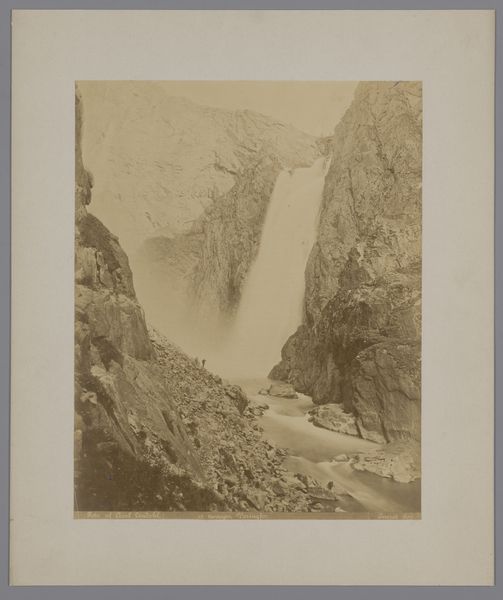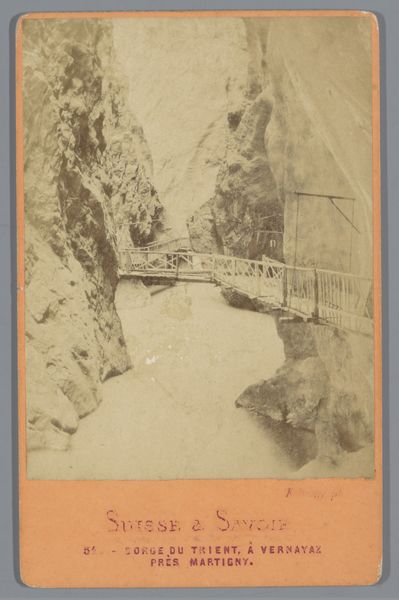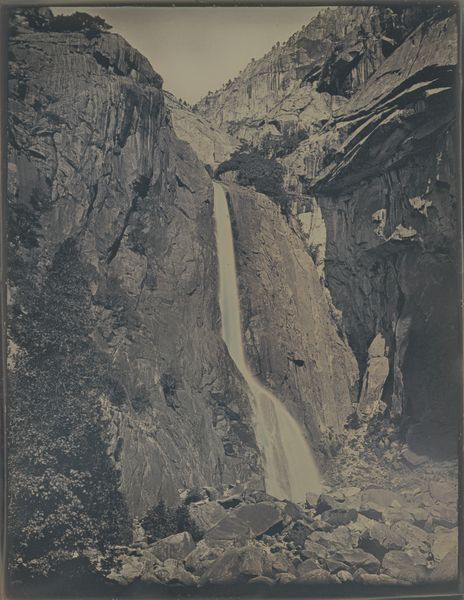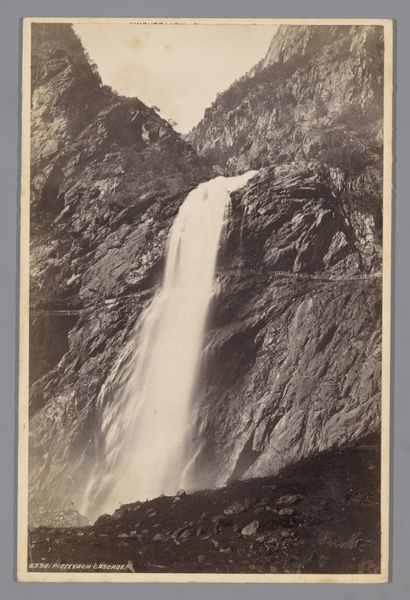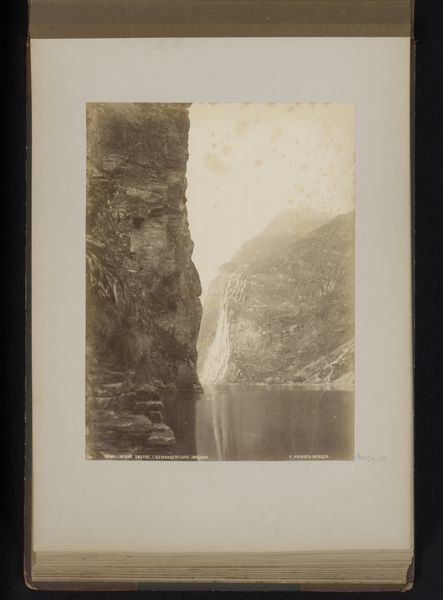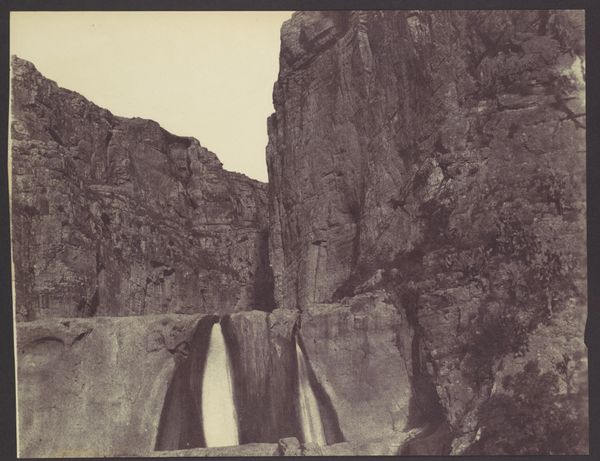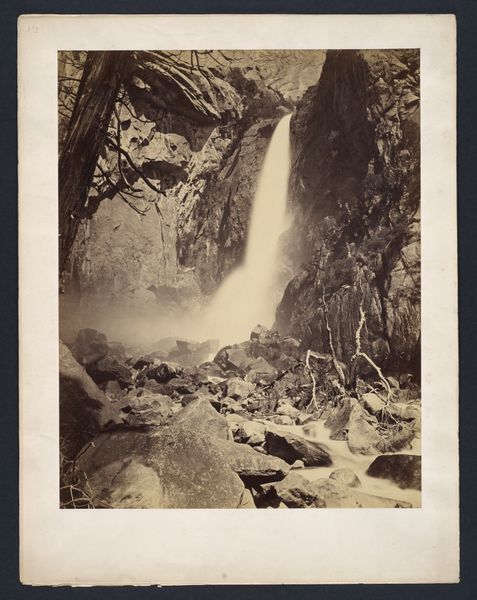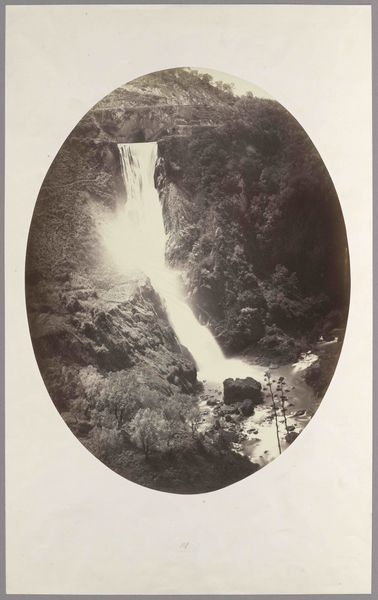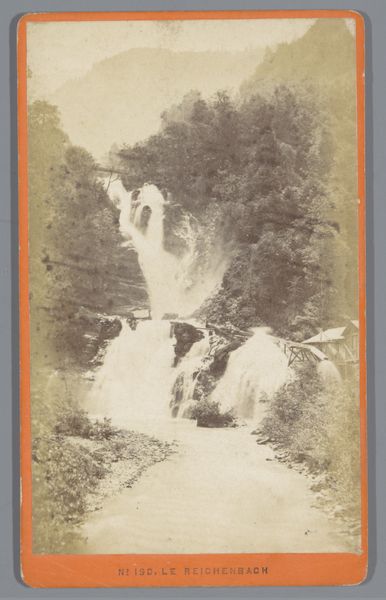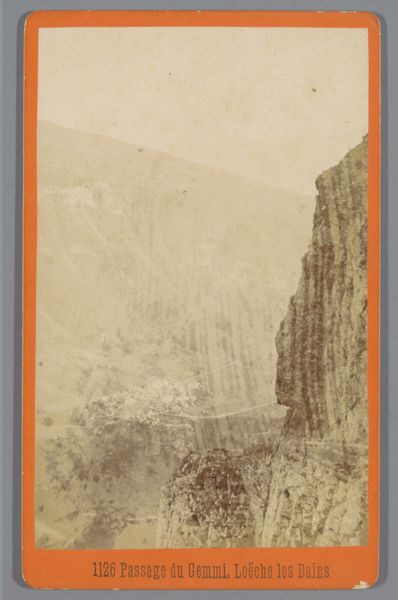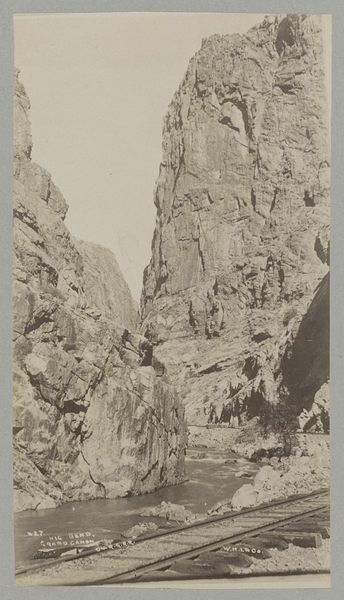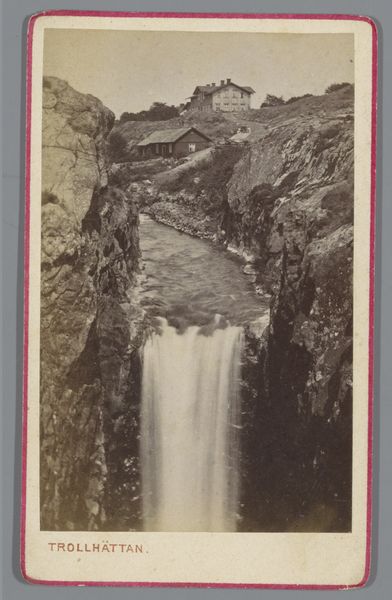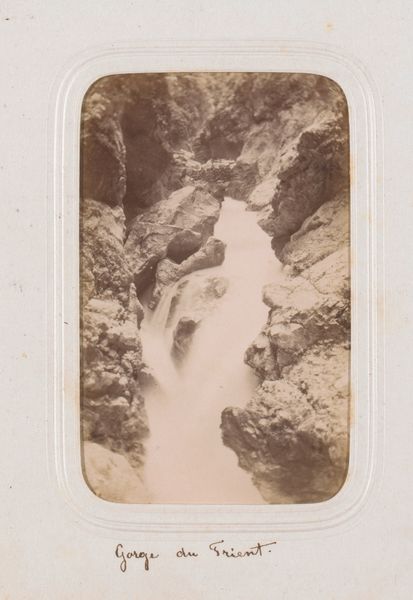
daguerreotype, photography
#
landscape
#
daguerreotype
#
photography
Dimensions: height 61 mm, width 105 mm
Copyright: Rijks Museum: Open Domain
Curator: What an intriguing composition! It immediately gives me a sense of the sublime. Editor: Agreed. This image, "Salzachöfen nabij Golling," believed to have been captured between 1862 and 1880 by the firm of Baldi & Würthle, is a fascinating example of a landscape captured with daguerreotype photography. The scene portrays a dramatic rock formation. Curator: Looking at this piece, I'm immediately struck by the geological implications, and subsequently, the human effort that it would take to represent it visually with the very cumbersome early methods of photography. It almost looks like the negative space is as important as the rocks themselves! Editor: Absolutely. Consider the context of its creation, though. The rapid development of photography during this era democratized landscape art, removing some of the elitism that landscape paintings may have held. Also, photography in this moment became a form of colonialism; people took pictures of places in order to subdue them, transform them, to use the location's material for their own making and profit. This piece exists in that uncomfortable nexus of science, exploration, and, frankly, exploitation. Curator: Yes, that's well taken, especially the allusion to "exploitation". Thinking of materials, this photographic printing process required light-sensitive surfaces, silver-plated copper, mercury vapor for developing, plus the paper and mounts for the final product. I can’t help thinking that the raw material was mined for the silver in this print. The labour... It also raises questions about access—who had access to such materials and why? Editor: Exactly! These early photographic landscapes not only document geography but also reflect a society's evolving relationship with land, industry, and identity. It’s a narrative about who got to see and who was seen. I believe reflecting on how this particular image participates in such narratives helps us connect it to contemporary questions of environmentalism, and the decolonization of resource usage in contemporary political ecology. Curator: What's great is that it brings the world—even something as grand as mountains—closer for people and can act as an entry point for questions of ownership, consumption, and even exploitation. Editor: Exactly, this unassuming little photograph prompts vital questions about environment, materiality, and representation that remain urgent today.
Comments
No comments
Be the first to comment and join the conversation on the ultimate creative platform.
